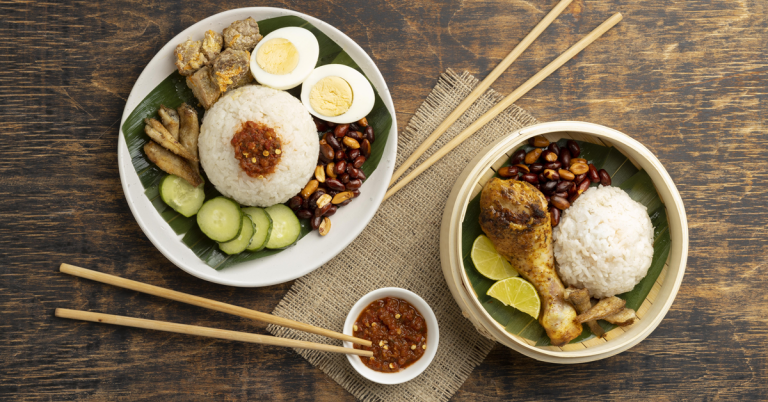Is Malaysia’s Food Inflation Worse Than You Think?

These days, Malaysians are increasingly wondering if food inflation is worse than they think. Official figures suggest modest rises but dig deeper and you’ll uncover how rising food prices bite into household budgets and push up the real cost of living.
According to the Department of Statistics Malaysia (DoSM), Malaysia’s headline inflation in June 2025 was just 1.1 per cent year‑on‑year, down from 1.2 per cent in May. Food and beverages rose 2.1 per cent, with food‑at‑home actually down 0.4 per cent, while food‑away‑from‑home rose 4.7 per cent. Similarly other reports indicate that there was a 2.1 per cent food inflation in June, unchanged from May this year.
On the surface these numbers suggest a controlled situation: food prices rising slower than in past years as Malaysia’s economy moderates, helping to keep the rise in cost of living modest. However, the lived experience is different.
Beyond official numbers, the lived experience paints a painful picture
The truth is that the reality for many Malaysians feels far worse. While the overall food price index shows modest gains, essential items and street food have seen sharper hikes.
A SCMP feature cites nasi lemak breakfast rising by 5 per cent in 2024 to RM 3.68 on average, this is nearly double over ten years. Cockles prices jumped 400 per cent. Meanwhile vendors report multiple price hikes to keep pace with rising raw‑material and logistics costs.
UNICEF data in Kuala Lumpur found that 52 per cent of children in low‑income households eat fewer than three meals a day, as families struggle to afford staples like rice and chicken. These families typically earn below RM 2,816 a month . That highlights how food inflation directly worsens cost of living burdens for the poorest.
The slow burn of rising prices over time
Malaysia’s food inflation has eroded purchasing power drastically over the decades. A 2025 report from the Malaysian Statistics Department found that what cost RM 30.90 in 1980 now costs RM 100 in 2024, meaning a 69.1 per cent decline in purchasing power for food items. B40 households (below RM 5,250 per month) spend 71.6 per cent of their income on daily necessities, compared to 64 per cent for T20 households.
That kind of chronic rise in food inflation means families must cut back on non‑essentials or switch to cheaper, less nutritious food, undermining well‑being.
Why the gap between official numbers and reality?
On paper, Malaysia’s inflation looks manageable. But for many, what they see in market stalls and hawker centres tells a different story. The official Consumer Price Index (CPI) may not fully capture the day-to-day reality of rising expenses faced by average Malaysian households.
There are several reasons why official figures understate the lived cost of living:
- The CPI basket uses selected goods; local staples and hawker meals may not correspond. As some analysts note, CPI can be a “scam” if it doesn’t reflect everyday items people buy.
- Subsidy reform has removed ceilings on chicken and egg prices. The government spent RM 3.8 billion on these subsidies since Feb 2022, then lifted ceilings in Nov 2023. Chicken rose from about RM 8/kg to as high as RM 9.40.
- Depreciating ringgit raises import costs for flour, sugar, corn and more.
These differences matter, because when policy is shaped by broad averages, it can overlook the sharp spikes that lower-income families feel first. Until official data aligns more closely with lived experiences, the true burden of inflation will remain hidden in plain sight.
Is food inflation worse than you think?
Yes it is, particularly for low‑income households. While overall food inflation was a modest 2.1 per cent in June 2025, that average masks wider variation. Food‑away‑from‑home rose nearly 5 per cent. Many households face repeated price hikes on street food, chicken, vegetables and seafood. In some cases like cockles, prices quadrupled while overall inflation remained low..
Moreover, households that spend more than two thirds of income on food feel every rise sharply. With food inflation piling on top of stagnating wage growth (under 3 per cent), real incomes shrink. This combination pushes up the real cost of living significantly more than CPI suggests.
What next? Government response and outlook
On 23 July 2025 Prime Minister Anwar Ibrahim announced one‑off RM 100 cash aid for all adults starting end August and expanded cash assistance in 2025, partly in response to protests over rising prices. The government also pledged to lower RON95 fuel prices and expand affordable goods initiatives
While headline inflation is down to a low 1.1 per cent and food inflation easing, these moves reflect growing awareness that many Malaysians still struggle under the weight of real food inflation and the real cost of living.
In short: official food inflation figures in Malaysia suggest modest increases, but the lived reality tells a tougher story. The experience of sharp rises in staples and hawker meals, declining purchasing power over decades and major burdens on low‑income households show that food inflation is indeed worse than many think. And that means the cost of living for most is rising far faster than CPI implies.










